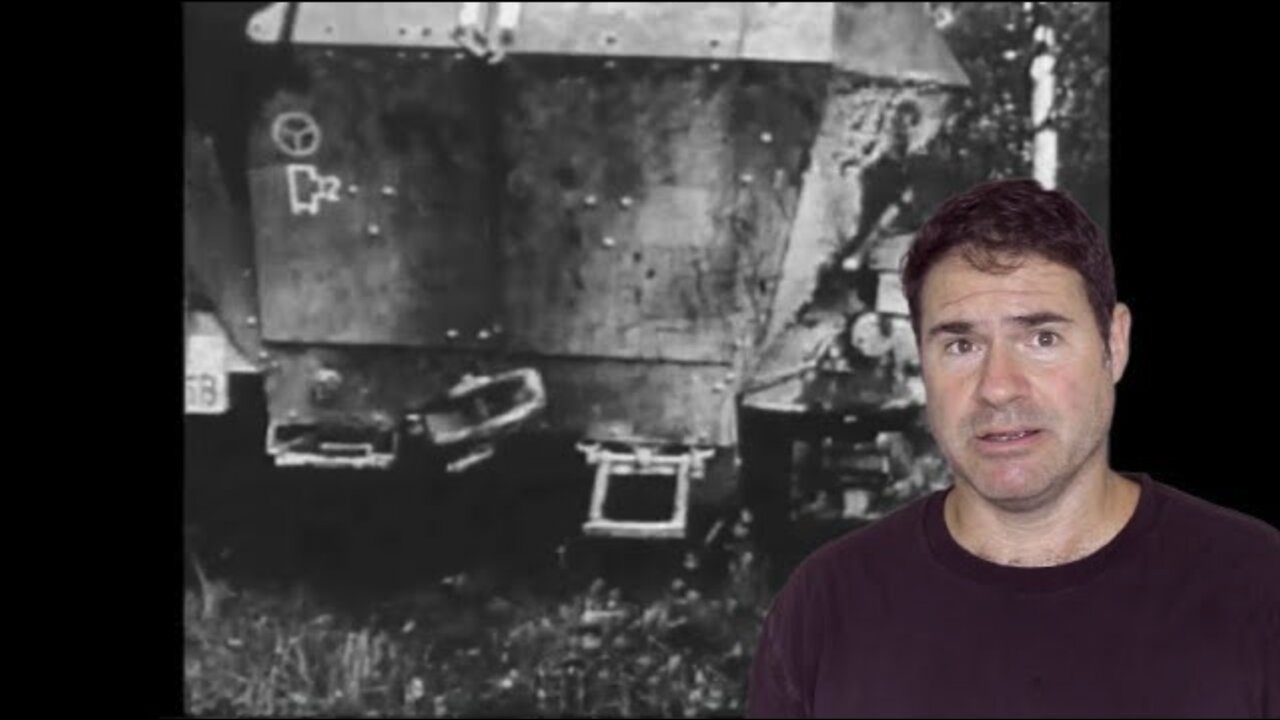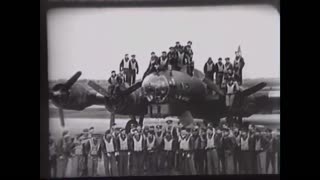Premium Only Content

12th Panzer Division Pt 2 - Hoth - Army Group Center - Barbarossa - Josef Harpe - 3rd Panzer Group
SUPPORT THE CHANNEL
www.Patreon.com/Military1945
Having captured all three bridges across the Neman River undamaged on June 22, things had gone well for PzG 3. The following day would be more problematic. A combination of poor road conditions, bad coordination between advancing units and a lack of security had slowed the progress of the advancing column to a crawl. It also neutralized the air superiority that PzGr. 3 should have enjoyed.
Having successfully crossed the Neman River at Merkine, as the 12. PzD approached the Rudnicke Forrest on the morning of June 23 everyone was optimistic. The enemy’s resistance in the border region was largely broken and only occasional contact with stragglers was expected.
On the service maps, clear roads leading from east to west through the forrest were delineated. But these turned out to be nothing more than dirt trails made up of dust and sand with often extremely limited lateral clearance which left the columns vulnerable to ambushes
Attacks by small groups or even individual soldiers could bring the column to a halt. Stationary targets were easy targets and precious time was being lost.
Adding to the complications, the trucks and confiscated French city cars continually bogged down. Soldiers and crews worked frantically to dig them out and keep them moving.
Here we see a wagon being taken from some Russians. The metal frame the soldier is holding is worn like a backpack and carries signal corps communication cable. These poles were used to place the cable in elevated positions, for example among tree branches.
This is the 12. PzD’s commander Major General Josef Harpe on his command vehicle. He would be awarded the Knight's Cross on 13 August 1941.
The 12. PzD’s slow, almost single file, progress through the forrest on June 23rd caused terrible congestion all the way back to the Neman river.
This is the situational map for June 23, 1941. We’re looking at Army Group Center, PzGrp. 3. We can see the advance the 12. has been able to make throughout the day arriving to the outskirts of Woronowo. The 18. mot. ID continues covering the right flank of the advance. Elements of the division have lagged behind maintaining a defensive posture to counter Soviet forces that are in the area.
Due to the traffic jam up ahead, the 19. PzD has remained in an easily defensible position on the west bank of the Neman river for hours, waiting until things clear up. Directly behind the armor are around 2000 trucks belonging to the Luftwaffe. Rather than waiting, the trucks begin to push on, crossing the bridge and immediately get bogged down on the soft sandy trail. Chaotic hours are spent digging the trucks out, bringing them back across the bridge and moving them out of the way.
The incident with the 19. PzD not only slowed down that armored formation but it also kept the Luftwaffe from establishing forward bases to the East of the Neman River. This meant that communication between the squadrons and lead elements of the German advance could not be established. This situation was not seen as critical because most of the Soviet planes positioned near the border had already largely been destroyed which had been the Luftwaffe’s primary objective. What had been lost was the Luftwaffe’s opportunity to fully cooperate with German ground forces causing further damage to Soviet formations that were already in disarray. Under constant pressure from additional air attacks how many Soviet units that were retreating might have instead surrendered?
There were other logistical reasons for the traffic jams that were happening. The leadership of the 9. Army had instructed the corps to do everything in their power to keep up with the PzDs. They even created ad hoch motorized elements and somehow were given permission to use the designated “tank roads”. The complete lack of logistical coordination between these motorized groups and the panzer formations caused plenty of confusion.
Not until early in the morning of June 24, is the 19 PzD able to begin advancing again. In spite of these frustrating delays, the first two days of the invasion really couldn’t have gone much better. Colonel General Hoth who was commander of PzGr 3 intended that on June 24 the 20. and 7. PzDs should be able to take Vilnus quickly, although the city wasn’t really considered important objective. More important was their continued race to the north-east in the general direction of Glebukie. Facing little resistance, the 12. PzD would continue heading north east towards the city of Dokszyce.
The difficulties caused by the fog of war were making some in the German High Command nervous and there were disagreements as to how the operations should proceed. In the next video in this series we’ll take a look at the different options and see what was actually done.
-
 8:25
8:25
Military1945
27 days agoDie Wehrmacht 1944 Nr 4 Pt 2 - Air Defence - Flak 88 - FW 190 - Me 109 - Goering - 8th Air Force
621 -
 LIVE
LIVE
LFA TV
14 hours agoLFA TV - ALL DAY LIVE STREAM 4/16/25
3,767 watching -
 LIVE
LIVE
Caleb Hammer
55 minutes agoI Wasn't Expecting This... Transition… | Financial Audit
86 watching -
 LIVE
LIVE
Bannons War Room
1 month agoWarRoom Live
16,324 watching -
 1:56:07
1:56:07
Matt Kohrs
12 hours agoStocks Fall, Breaking Market News & Live Trading $1M || The MK Show
72.9K3 -
 LIVE
LIVE
The Big Mig™
4 hours agoIt’s Time To Pay The Piper Letitia James!
4,694 watching -
 33:37
33:37
Stephen Gardner
15 hours ago🔥Trump's LATEST legal NIGHTMARE explained by Alan Dershowitz!
30.9K52 -
 LIVE
LIVE
Badlands Media
8 hours agoBadlands Daily: April 16, 2025
5,141 watching -
 58:41
58:41
Randi Hipper
2 hours agoCRYPTO WINTER IS BACK? BITCOIN MAJOR LEVEL TO WATCH
34.5K -
 LIVE
LIVE
Wendy Bell Radio
7 hours agoDemocrats Are Making The Icing For Their Midterm Slaughter Cake
8,443 watching